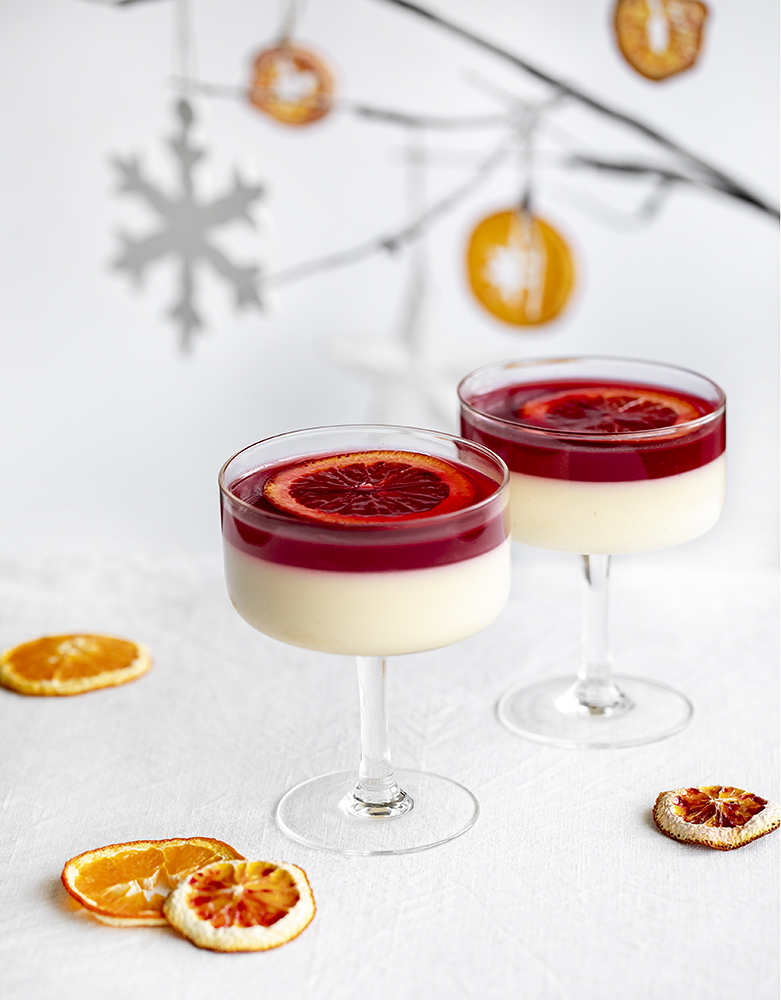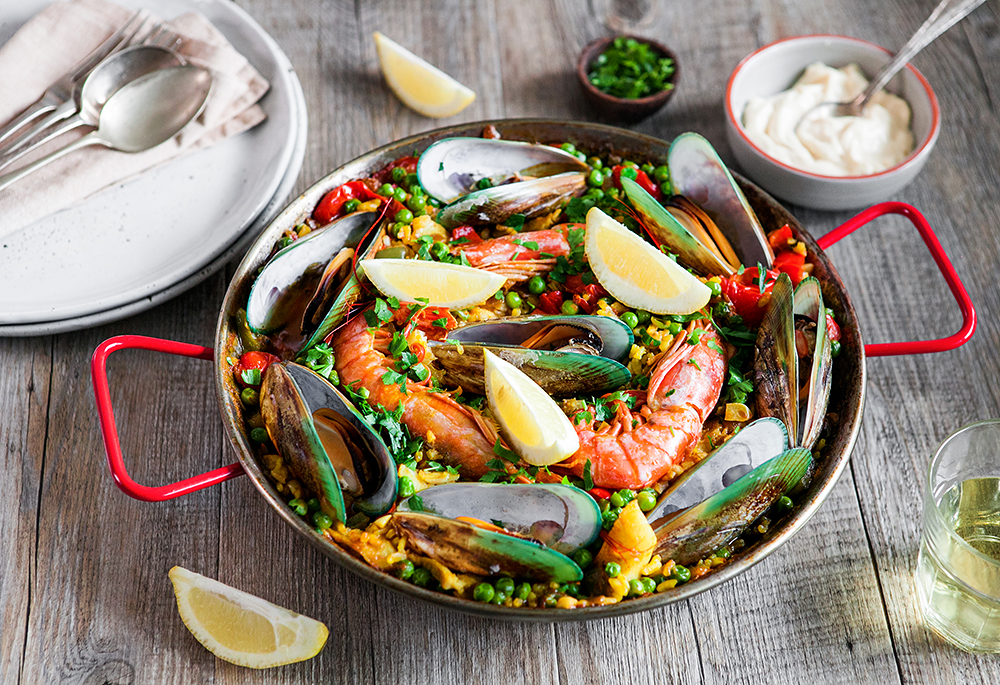 Add more colour to your Christmas feast! Enjoy healthy and delicious seafood Paella. Fresh seafood, fragrant saffron rice, sweet capsicum and smoky paprika make this dish a fabulous. So yummy!
Add more colour to your Christmas feast! Enjoy healthy and delicious seafood Paella. Fresh seafood, fragrant saffron rice, sweet capsicum and smoky paprika make this dish a fabulous. So yummy!
Paella originates from a region of Spain called Valencia, which is in Eastern Spain. These days paella can be found in many countries and it is especially popular in Spain. The recipe has expanded over the years, and now many different varieties of paella are passed off as authentic.
Historically paella was introduced as the delicious solution to leftovers. And depending on where you live, you would utilize ingredients available in that region. It makes sense then that there are many variations of paella today!
The best paellas have pockets of slightly burnt rice that has stuck to the bottom of the pan only to be scraped off and circulated along with the perfectly-cooked seafood rice.
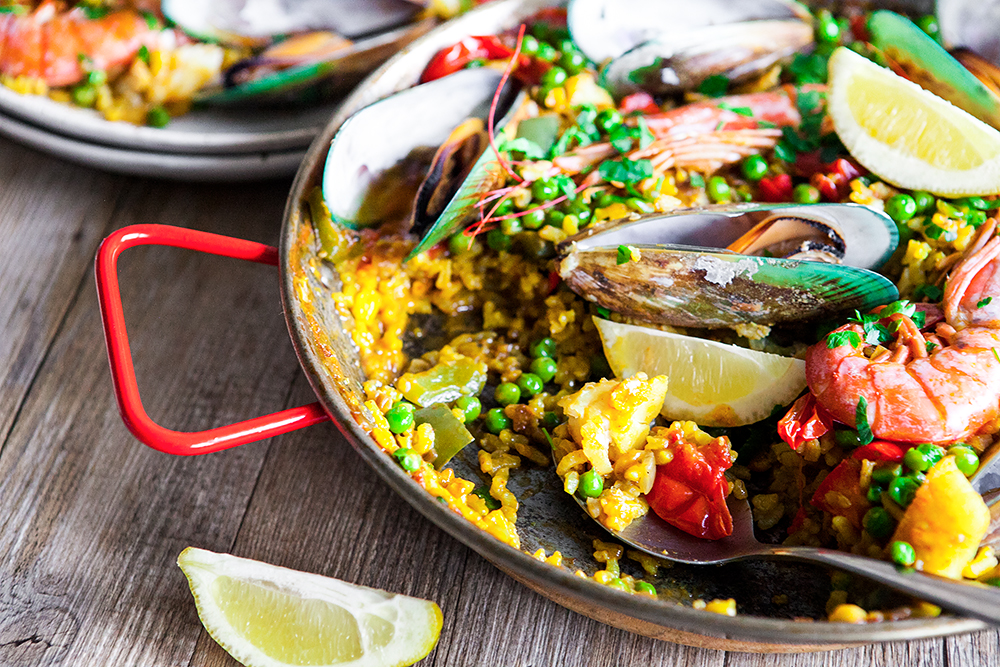
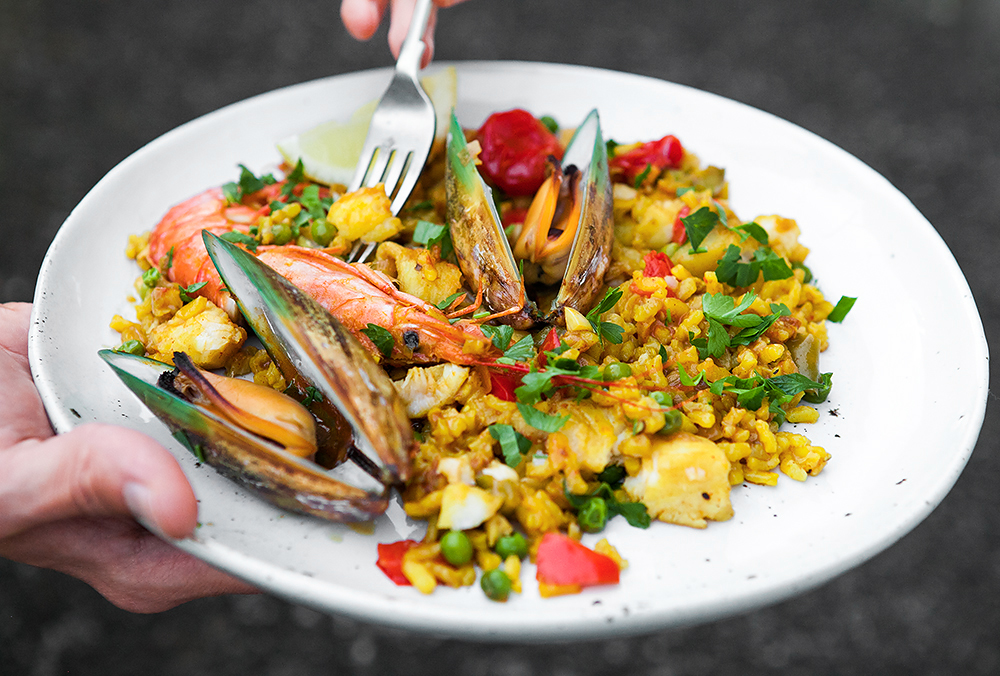 Paella Pan
Paella Pan
When cooking paella, it’s best to use a large, flat pan that is open and has handles on either side for easy handling. A quality paella pan is an essential tool for a great paella. A few shops in Auckland sell glamorous paella pan.
Paella is the perfect one-pan barbecue dish, although it can also be prepared on the stovetop.

 Rice
Rice
The second important rule for paella (after Paella pan) to choose the right type of rice. Traditional varieties grown and eaten in Spain have been the short grain, almost round varieties, which are very suitable for the classic Spanish rice-based dishes.
Usually, I use Bomba rice. Bomba rice is not cheap across New Zealand, you can find it in gourmet shops such as Farro. Delmaine brand sells Bomba rice for a good price (check Countdown supermarket). Arborio rice (risotto rice) also can be used for paella.
Seafood
There are no rules about which seafood you use – feel free to choose your favourites. Originally seafood paella was a popular fisherman dish and has been cooked for the dinner using leftovers of the catch.
Commonly a seafood paella will include a combination of shrimp, clams, mussels and often squid. You could also add scallops, firm white-fleshed fish or even salmon.
There are two ways to add clams and mussels into paella. I prefer to add cooked clams at the end of the paella cooking process, less chance to overcook it and get rubber texture.
You also can try to add raw mussels (clams) with fish/seafood and cook with the lid on. If you use this method, don’t forget about white wine. Add wine to the rice before adding the broth and cook about 3 minutes or until the alcohol has evaporated.
Please, don’t ask me: Where is Chorizo? This is a healthy variation of Paella. Though, who knows)
 Broth/Stock
Broth/Stock
Using the best possible stock is one of the most important steps when making paella recipe. The great thing about paella or risotto rice varieties is that they’re able to absorb plenty of the cooking liquid without overcooking. And of course, that means they’re able to absorb the flavour from that liquid too. That’s why making an effort to prepare a good fish stock is so important when cooking a paella. Because when you eat rice, most of its flavour will be coming from the fish stock.
Save your time with Best Bones Broth. Their organic broth is crafted using the traditional method of a long slow simmer. Resulting in a more nutrient dense and gelatinous bone broth. Perfect for paella!
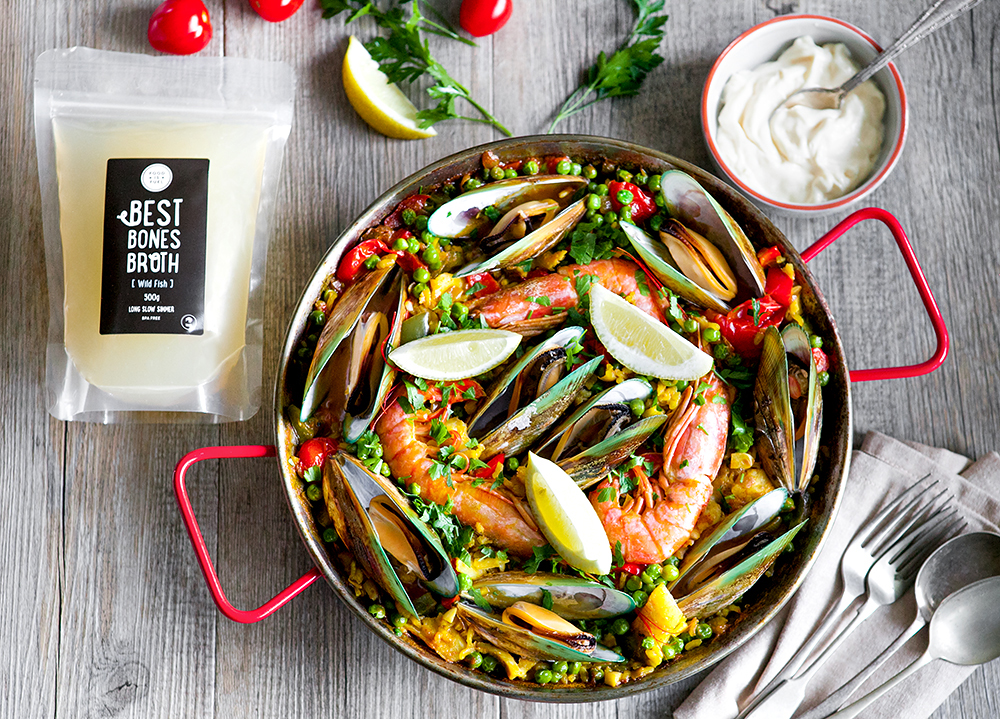 Saffron
Saffron
Saffron is a spice derived from the flower of Crocus sativus, commonly known as the “saffron crocus”. This is one of the most valuable and expensive spices known worldwide, thanks to its colour, flavour and medicinal properties. Saffron gives paella its characteristic yellow hue.
Soak the saffron threads in a small amount of hot water or broth before adding them to the dish.

Ingredients
3-4 Serves
- 9 mussels, bearded and scrubbed
- 350g deep sea cod fillet, cut into 3 cm chunks
- 4 big or 8 small prawns, peeled or unpeeled, deveined
- 3-4 cups of Best Bones Broth wild fish
- 1 cup Bomba rice
- 1 green capsicum, chopped
- 1 red capsicum, chopped
- 1 onion, chopped
- 4 garlic cloves, crushed
- 1 cup frozen peas (thawed)
- 150 ml white wine
- 1 punnet cherry tomatoes, halved
- pinch of saffron, soaked with 2 tbsp hot water
- 1 teaspoon smoked paprika
- pinch of cayenne pepper
- olive oil
- salt
- black pepper
To serve:
- lemon wedges
- Italian parsley leaves, finely chopped
- Aioli sauce (optional)
Directions
- Combine 1/2 cup of white wine and 1/2 cup of water in the saucepan and bring to a boil. Add mussels and cover the pan with the lid. Cook with the lid on for 5 minutes. After 5 minutes, remove the lid and check the mussels. Nearly all the mussels should be open by now. If not, cover and cook an additional 1 to 2 minutes. Discard any mussels that haven’t opened after this time. Strain and reserve the liquid.
- Heat 1 tablespoon olive oil in a large paella pan over medium-high heat (I use 30 cm paella pan). Add capsicum and onion, saute about 10 minutes until vegetables are softened. Add garlic, paprika and cayenne. Add tomato and cook for 3 minutes to soften. Add rice and mix until the grains are coated in oil. Add reserved liquid, 2/3 of hot fish broth and soaked saffron (with liquid). Season with salt and pepper. Stir once, then leave until it starts simmering, then turn the heat down to medium. Do not stir! Simmer for about 15 minutes.
- When the time’s up, add the remaining stock, peas, prawns and fish fillet. Cook for about 10 minutes until the seafood is cooked and most of the liquid has evaporated. The edges will be crunchy. Do a taste test to see if the rice is cooked – it should be firm but cooked. If it is too firm for your taste, no stress, just add a splash of hot broth/water and keep cooking.
- Place cooked mussels in the Paella nests and reheat them. Turn off the heat. Cover paella pan with the foil and let to rest for 5 minutes before serving. Sprinkle with chopped parsley. Serve hot with lemon wedges and a small bowl of Aioli sauce (Garlicky Mayo).


